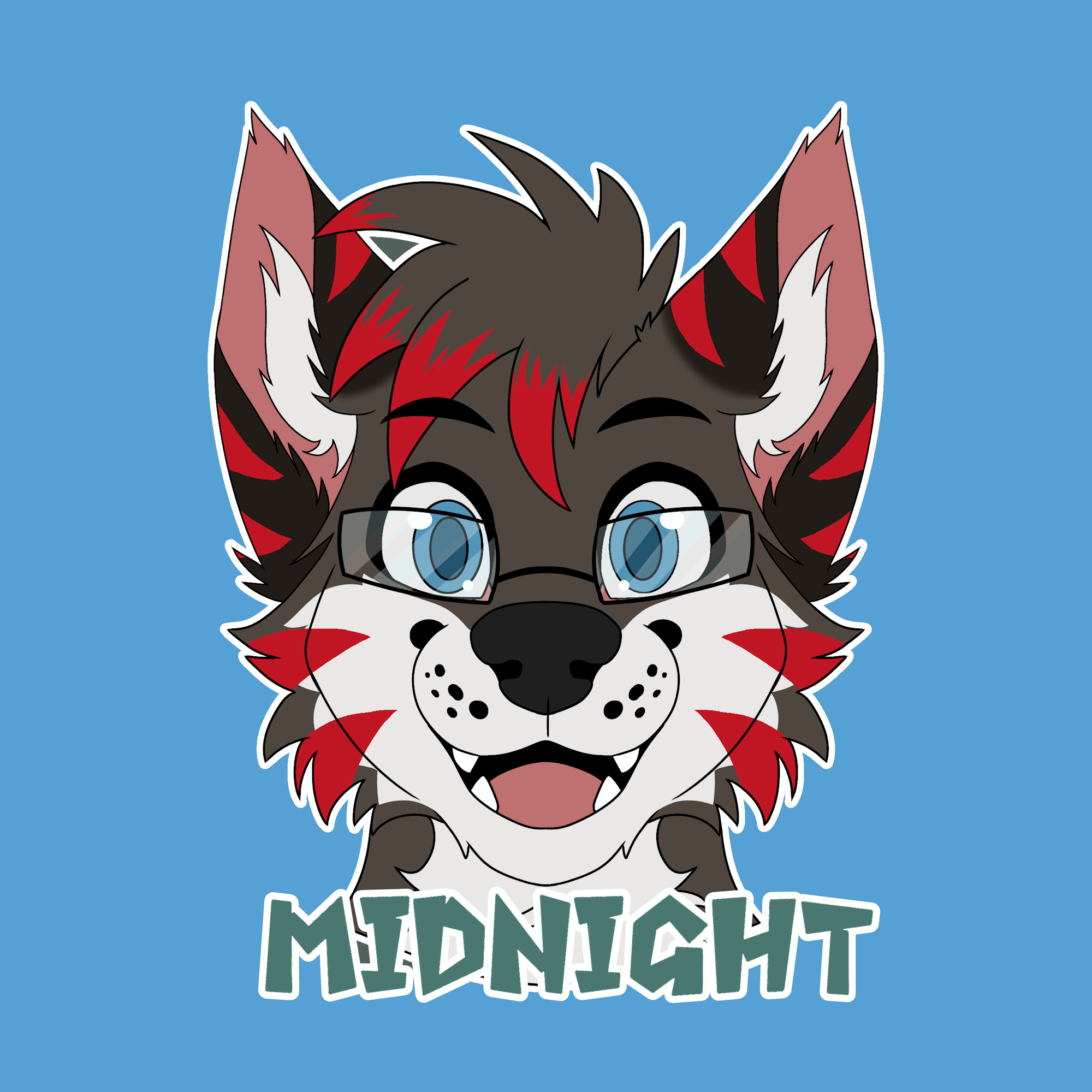Windows: You got a kernel panic from an update just once this week? I went through two BSODs today!
Mac: It’d happen more often if I actually had software! You get everything!
Arch: While getting updates can cause crashes sometimes, new stuff is fun.
Debian: You guys are getting updates?
Debian: You guys are getting updates and crashes?
Oh we get updates, after all the other distros have spilled their blood all over them for us first. Why do you think they call it bleeding edge?
Backports don’t count
😮why?
What? I never had an update break my system on Arch, even with nvidia proprietary drivers.
2-3 years ago, an update to GRUB completely fucked the bootloader on Arch systems. I remember it well because it was the only time I was thankful for choosing Manjaro (which receives updates on a delayed schedule).
(edit) Found it! https://archlinux.org/news/grub-bootloader-upgrade-and-configuration-incompatibilities/ A breaking change in the GRUB configuration caused systems to become unbootable. Manual intervention was required to regenerate the config files (I think it was supposed to be handled by a pacman hook but can’t be sure).
Upgrading on arch involves looking at the arch news. And IIRC, there was also a warning for some time when upgrading grub. So, assuming people who use arch, btw, use it properly, I don’t see the issue.
I’ve had two instances in the past year on Purple Arch (Endeavor) where a kernel update “broke” my system. In both cases, the system still booted fine though, so not all definitions of "broken"may apply.
The first time there was a bug with the kernel drivers for my wireless card which caused a component of Network Manager to lag out the entire UI to the point it was basically unresponsive trying to find a connection, but never did.
The second time, it was a bug with the Vulkan drivers that caused all my games to crash within 60 seconds of starting up. Games are the main thing I use my PC for, so my system was effectively “broken”, even though everything else was fine.
I am of course not discrediting your fortune - I merely wanted to share
Yea, that is not your system broken, but just an package update that was faulty, and probably fixed with an update a few hours later, isn’t it?
And you were able to role back such packages with yay/pacman, I suppose?
Yeah, kernel rollback fixed things no problem
Is this how people can claim that Arch is stable, they just redefine breaking to exclude anything that might actually happen?

I had issues with Arch all the time. Now is that the fault of my system being dodgy or my lack of skills? Probably. I even have wifi SOMETIMES not work on Mint.
Me too 😆 after killing manjaro twice and pivoted to endeavourOS
Not break my system, but definitely had individual functionality that stopped working. But a quick search of the news for “manual intervention” items (or just web searching for my issue) would result in a very quick turnaround time.
Maybe I should go back to maining Arch.
Next update: the same thing breaks again. After searching forums, you notice a pattern going back to 2002.
Is this some sort of Arch joke I’m too stable and usable to understand?
Debian stable. I don’t understand why people would want an unstable system.
I get wanting the latest applications, and by that I mean end-user tools one uses frequently, e.g. Blender or Steam, but for anything that those rely on, very very rarely does one genuinely need anything “new” urgently. I’d argue pretty much never but I’d be curious to discover counter examples. Just fa couple of days ago https://lemmy.ml/post/24882836/16154377 arguing about the topic too. Even for drivers for gaming, which are supposedly changing relatively “fast” there is rarely an actual need for it. Quite often it’s a desire to get the latest but the actual impact is not that significant.
TL;DR: IMHO stable system with security updates running few bleeding edge apps isolated is the best compromise.
deleted by creator
I tried running mint on a new laptop I bought.
Because the hardware was newer I ran into issue after issue trying to get various drivers and basic things functioning.
Moved to Endeavor, smooth as ice, everything just worked.
So at least from my experience hardware age seems to matter too.
You can update to the latest kernel in Mint.
That I understand, and I’m also on that boat. That’s what I tried to express separating the system, i.e. parts with dependencies, vs “just” applications and giving an example like Blender.
I understand for that aspect but for anything that is lower down the stack IMHO what are actual features needed and people can’t wait on are very very few and the trade off is probably for most people not worth it.
Obviously not everybody has the same taste for risk and some people might find it thrilling to install a system back at a random moment if it brings them 1 FPS extra or a very obscure feature that nobody else needs so I find it great that alternative exist. What I’m arguing for though is that people who do take a higher risk do so knowingly.
Edit: as an example of bleeding edge, there are some applications I download from the repository, build and run so they are basically as new as they can be. Again this is extremely precious to me, but it’s not part of the “system”, they are “leafs” on the dependency tree thus never leading to any catastrophic effect.
I’m on fedora 41 and gaming is almost perfect on it, the final hurdles are some VRR refinements and HDR. These are supposedly coming in f42 so I’d rather not wait god knows how long on Debian for these features to show up. However once the features arrive and I run into issues with F42, I’ll consider Deb.
I’m gaming pretty much daily, VR and flat, and… I don’t even know what those abbreviations mean. I’m not saying these aren’t important to you and other gamers but also want to suggest that a lot of “features” pushed by the industry are for other casual yet frequent gamers like me totally unimportant.
I’m on fedora 41 and gaming is almost perfect on it, the final hurdles are some VRR
Variable Refresh Rate - synchronizing your monitor’s refresh rate with your computer’s output, yielding a potentially smoother image and, for portable gamers, better battery life. This is a key feature of “Freesync” monitors, etc.
refinements and HDR.
High Dynamic Range - increase in the variability of light levels achievable in a scene, allowing monitors to better approach the dynamic light levels one would experience IRL (In Real Life). This is a key feature of most new displays, especially higher-end OLEDs (Organic Light Emitting Diodes, a type of display technology where pixels are individually lit)
These are supposedly coming in f42
Fedora 42 - the 42ndiest version of Fedora.
so I’d rather not wait god knows how long on Debian for these features to show up. However once the features arrive and I run into issues with F42,
Fedora 42 - the 42ndiest version of Fedora.
I’ll consider Deb.
Not an acronym, but abbreviation for Debian. Or perhaps OP lives in a Hallmark movie and Deb is the girl who has always been by their side, but they’ve never considered as a romantic partner… Until now…
Haha, appreciate the assist my man!
Now that you can get latest software from Flathub, there’s really nothing wrong with Debian “stable” except for more recent hardware support that requires newer kernel at the very least (recent userspace drivers will also come from Flatpak if the software like Steam is also a Flatpak). That is, if the stable repo has all you need and there’s no reason to supplement it with external packages.
There are however perfectly valid reasons for going with rolling to get recent improvements, which I for one care about. For example, now that PipeWire is pretty mature, Debian 13 will ship good version and it will serve well for the next 2-3 years, but some 2 years ago it was really important to get the latest and greatest to have good experience - and even early it was better than PulseAudio would ever be, just still improving rapidly, not ready for full freeze. Other example - KDE Plasma improved significantly from version 6.0 onwards introducing long awaited functionality like fractional scaling, HDR, but also improved stability and general polish. It will only be introduced in Debian 13, one full year after it was introduced.
Lastly, there’s nothing wrong with rolling and it isn’t really “unstable”. Using Arch full time for the last 12 years, I only had like 2-3 situations when update actually broke something and it wasn’t my misconfiguration or a skill issue. Even then it could easily be avoided by using linux-lts kernel. In fact my Debian/Ubuntu installs were much less stable as there was always something missing that I needed (in era before Flatpaks or AppImages especially) relying on 3rd party apt repos, causing breakages and conflicts. I would usually upgrade Debian to testing or unstable anyway, so rolling, but one that’s actually open for breakage.
Or, you know, use something like Fedora that gives you both.
Care to explain how it does in a way that other distributions don’t?
It doesn’t
Ohh, but the pain of discovering that it broke something important, but not often used, 3 months later…
🤣🤣🤣💀
When my arch testing prod server reboots cleanly after a kernel update
It’s a meme because it’s made up and never happens /s
It definitely happens if you upgrade to the next version of your distro while it’s still in beta.
You hit a bunch of bugs, and they actually do get fixed around final release time.
Once you’re on a stable branch, updates rarely include major changes.
I updated the the other day and now my system boots to a grub prompt; I have to type
exitand then it starts normally.I’d figure out how to fix it, but I reboot so infrequently that I keep forgetting about it.
I feel like running
grub-mkconfig -o /boot/grub/grub.cfgwould probably fix that.Disclaimer: I mostly have no idea what I’m talking about.
Yup! That’s definitely the solution
Disclaimer: me neither
I’m in the 4th box where there’s nothing to do so you try something new and botch up systemd or netplan or something enough to warrant a fresh install and start again
Ackshyually your distro can’t get “stable” in an update. “stable” means that the distro should not have any new issues introduced with updates in the first place.
Ackshyually stable only relates to the release schedule. Stability is not reliability.
ackshyually, we are both right.
I would argue that the reason a slow release schedule is called stable because it aims to achieve stability and reliability.
stable is called stable because of stability
stability noun [ U ] uk /stəˈbɪl.ə.ti/ us /stəˈbɪl.ə.t̬i/ C1 a situation in which something is not likely to move or change: a period of political stabilityThe point of a stable distro is that it’s unchanging. That way you have predictable issues that you can solve in the same way for the lifetime of that version.
Reliability is a side benefit of maintainers choosing the best available version to freeze.
What is stable? I just run nix flake update then brew a coffee to accompany me for the next 12 hours

On my new Lenovo with a brand install of Fedora, DNF was reporting 10KiB/s disk writes when installing packages. That was a long long upgrade but fortunately all that got fixed by the upgrade.
Lol, I run Alpine Linux on edge and nothing ever breaks on reboot.
Famous last words :p
What is there even in alpine, that can break? /s
Only what I install and little else?
Which distro? I’ve upgraded Mint on the weekend. The installer failed with an error where i couldn’t get good infos about online.
Then i just rebooted the system out of frustration. Surprisingly it seems to work fine.
Is there a distro where upgrades just work? Maybe Fedora? Or i just install arch on the system, it works great on my server for the last 10 years without reinstall.
Fedora and Arch are pretty good. The magic sauce (my guess) is that they both pretty much release just upstream software without trying to “fix” them unless things are totally broken.
EndeavourOS just works on my machine…
Works on my machine^tm
Ysk, the unicode number for ™ is 0x2122. You can type any unicode hexcode on linux by pressing Ctrl+shift+u followed by typing the code then pressing enter.
While I’m here, a couple other easy and handy unicodes to remember: en dash: – 0x2013 em dash: — 0x2014
Most people use a normal dash instead of these, but en and em dashes are technically more correct in some cases
Or you can do it on your phone by typing ™
My phone has a gambling keyboard ♤♡◇♧
Atomic Fedora variants. Updates literally mean replacing the system image, so there’s nothing to really go wrong.
Fedora also broke an update on my watch, but it backed up automatically so I reverted.
Atomic distros should be good in that respect, including atomic Fedora distributions (Silverblue/Kinoite/…)
Atomic distros should be good in that respect, including atomic Fedora distributions (Silverblue/Kinoite/…)
I’ve now tried Fedora Silverblue in a virtualbox VM. After the first update, GDM wouldn’t start. I tried to restore to the older installed version and then updating this version, but now both versions are borked. Oh well …
Tbh I once faced similar issue when test-driving Aurora, a heavily modified Kinoite. It just blackscreened on boot.
But I didn’t run it on bare metal, so idk if it’s indicative.
Yeah, I’m not sure what happened. I reinstalled it now, maybe it won’t happen again.
Bazzite comes to mind.
Debian in particular is rock solid, even Debian Unstable has been very reliable for me if you want a rolling release with newer packages.
But I’ve also had very few problems with Ubuntu. My mother has used it for ten years at this point and will happily apply any dist upgrade she’s presented with, and rarely does she need support.
A pro tip is to check out the alternative desktop environments. A lot of people rightly hate Ubuntu’s awful default DE, but it’s not a core part of the distro, there are other complete desktop “flavours” available in the repositories and installers that will give you them from the start at https://ubuntu.com/desktop/flavours
(Switching an installed system from one DE to another is in principle as easy as uninstalling one desktop meta-package and installing another, but you got to make sure you get the right packages, or you might run into annoying conflicts, so I would not recommend it for a newbie)
















